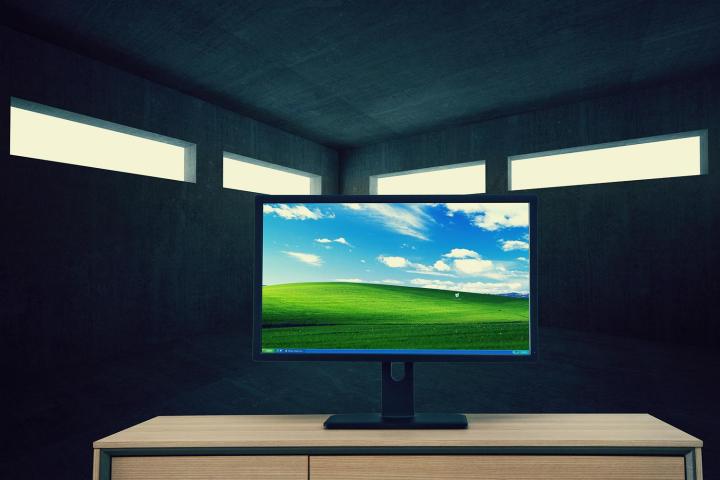
Microsoft’s famously successful (and still popular) Windows XP is now well over a decade old. While about 30 percent of Windows users worldwide still rely on XP, an operating system as aged as XP can’t be supported forever, and thus, its discontinuation date looms. After April 8th, 2014 there will be no new security updates and no new patches.
This effectively means that XP will be left to slowly become unsecured, unreliable and incompatible with new hardware, but you don’t have to abandon ship immediately. Here’s what you must know to keep XP going while minimizing the risks associated with using the OS once support for it concludes.
What end-of-support doesn’t mean
The end-of-support announcement has put some users into a panic, as it sounds ominous if you don’t delve into the details. We’ve encountered users who think that XP will simply stop working, users think thought they’ll be “forced” to upgrade, and users who believe troubleshooting XP will be virtually impossible after April 8.
The discontinuation of security patches is the most damaging part of terminating support for XP.
MORE: Common Windows XP problems and how to fix them
All end-of-support means is, well, “end of support.” No more patches, no more security updates, no more technical support from Microsoft itself. There are ways to work around these issues.
Update Windows, install an anti-virus, prepare for the worst
The discontinuation of security patches is the most damaging part of terminating support for XP. New attacks are constantly developed, but XP computers will no longer be receiving patches to counteract exploits. The operating system’s security will degrade over time.
There’s nothing you can directly do about this, but you can take security seriously. Download and install a free antivirus, such as Avast or Avira. Install any Windows updates that you haven’t yet grabbed. Make sure your browser, as well as any relevant plug-ins (like Java), are constantly updated to their latest versions, and make sure you’ve backed up your data with software like Crashplan or Cobian.

All of this is basic stuff you should’ve been doing already, but it’s even more important now that XP will be taken off life support. You’re on your own, so you must take every precaution to keep new exploits and viruses at bay.
Stockpile drivers and software
Microsoft’s decision to abandon XP will send waves throughout the computing industry. Manufacturers will take it as a sign that they, too, can start forgetting about the operating system. This means new drivers won’t take XP into account and, to make matters worse, XP-compatible drivers will slowly disappear from the Internet.
Paranoid users should grab a Windows XP install disk as a contingency plan.
MORE: Best Buy attempts to lure Windows XP refugees with $100 trade-in credit
You should give the same treatment to any important software you have installed. This includes security software, disk management software, performance tweaks, and anything else you consider critical. Old versions of software can disappear, too, so it’s good to have copies on hand.
Make sure you have a recovery option
Your Windows XP computer probably came with a recovery disk. Many users lose track of that disc eventually, so make sure you still have it.
Can’t find it? Then you have a few options.
You can make a new disc using your computer’s recovery software. Strangely, Windows XP lacks a native tool to make recovery CDs, so manufacturers often shipped PCs with recovery software that fills this gap. You’ll need to consult your manufacturer or your PC’s manual for instructions on how to use it.
A better option is to use a backup utility that images your entire drive, such as Acronis True Image. This creates a backup that saves not just your files and folders but also your operating system and all relevant settings. You’ll be able to re-install XP exactly as it was before with all updates and software intact. The software isn’t free, though; one Acronis license is $49.99.

Paranoid users should grab a Windows XP install disk as a contingency plan in case other recovery options fail. You can grab a disk for an about $30 to $40 bucks on eBay. Make sure the version on the disk matches the version of Windows you have installed, and that you have a valid registration key to use with it. Most computers ship with a key printed on them.
Bookmark helpful XP fan sites
Microsoft’s decision to end support for Windows XP likely won’t stop millions of people from using it, and XP user/fan sites will likely remain a good source for helpful tips and troubleshooting information if you ever run into a problem. You should become familiar with the most popular Windows XP fan forums, which include Bleeping Computer, Windows Forums, XPforums.com, and WindowsBBS.
MORE: U.S. Department of Homeland Security says Windows XP users should ditch Internet Explorer
There are also some fan sites that can assist with common problems, such as Mark Salloway’s Windows XP Resource Center, Paul Thurrott’s Supersite For Windows (check the XP section), and MakeUseOf (again, check the XP section). We’ve also a published a guide with fixes to common Windows XP problems.
Conclusion
You shouldn’t plan to stick with Windows XP forever though. Eventually, you’ll need to upgrade or replace hardware with newer equipment which doesn’t support XP, or you’ll fall victim to a security flaw Microsoft never patched. But you don’t have to jump to Windows 8 immediately. With some planning and perseverance, you can likely squeeze another year or two out of your existing setup.
Editors' Recommendations
- How to use cut, copy, and paste keyboard shortcuts in Windows
- Yes, you can use both Mac and Windows — here are some tips to get started
- Mozilla still has a beef with Windows 11 — here’s why
- Why using Android apps in Windows 11 is still a pipe dream
- You can manually download the release build of Windows 11 early — here’s how

